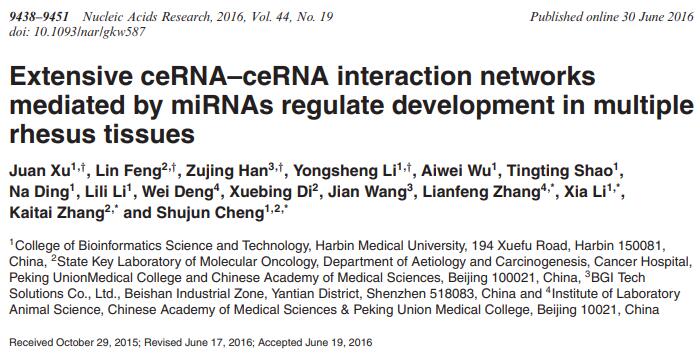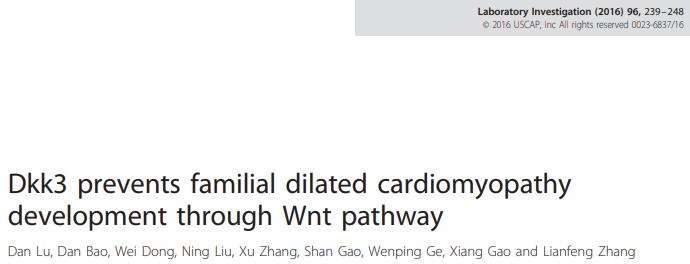-

Extensive ceRNA–ceRNA interaction networks mediated by miRNAs regulate development in multiple rhesus tissues
DetailsCrosstalk between RNAs mediated by shared microRNAs (miRNAs) represents a novel layer of gene regulation, which plays important roles in development. In this study, we analyzed time series expression data for coding genes and long non-coding RNAs (lncRNAs) to identify thousands of interactions among competitive endogenous RNAs (ceRNAs) in four rhesus tissues.
-

Dkk3 prevents familial dilated cardiomyopathy development through Wnt pathway.
DetailsTo date, the role of Dickkopf 3 (Dkk3) on the pathogenesis of familial dilated cardiomyopathy (FDCM), and whether and how Dkk3interferes with Wnt signaling in heart tissues remains unknown.
-

Cyanidin 3-O-β-glucopyranoside activates peroxisome proliferator-activated receptor-γ and alleviates cognitive impairment in the APP(swe)PS1(ΔE9) mouse model
DetailsAlzheimer's disease (AD) is currently one of the most common neurodegenerative disorders worldwide. To date, no cure has been developed for AD, and some disease-modifying treatments show side effects and low efficacy.
-

Cross-Species Analysis of Gene Expression and Function in Prefrontal Cortex, Hippocampus and Striatum.
DetailsMouse has been extensively used as a tool for investigating the onset and development of human neurological disorders. As a first step to construct a transgenic mouse model of human brain lesions, it is of fundamental importance to clarify the similarity and divergence of genetic background between non-diseased human and mouse brain tissues.
-

Correction of Hair Shaft Defects through Allele-Specific Silencing of Mutant Krt75
DetailsDominant mutations in keratin genes can cause a number of inheritable skin disorders characterized by intraepidermal blistering, epidermal hyperkeratosis, or abnormalities in skin appendages, such as nail plate dystrophy and structural defects in hair.
Friday November 22nd,2024 You are the 1928953 Visitors

 WeChat
WeChat